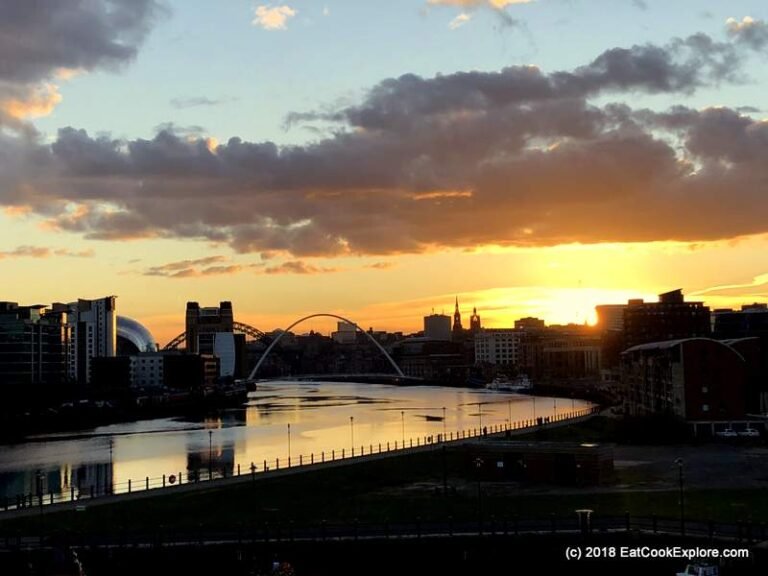

Juneteenth was just a trending keyword on social media until I visited Galveston. It was not until I was standing in this spot, looking at the Juneteenth “Absolute Equality” mural that I understood the emotions and meaning behind this important date in the abolition of slavery. This is especially poignant to me as I have been volunteering for Anti Slavery International for many years but have not had a real life experience of seeing history brought to life. https://www.antislavery.org/
Standing in front of the “Absolute Equality” mural brought to life the real story of Juneteenth. From across the pond, to me Juneteenth was a trending keyword on social media and I had no idea what it was about.
After seeing this spot in Galveston and talking to some locals, I now know so much more and why this place was so important and why Juneteenth needs to be celebrated.
What is the history behind Juneteenth?
In Galveston, Texas, you can visit that very place where history was made. At 2201 Strand Street, where the “Absolute Equality” mural now stands, Major General Gordon Granger delivered General Order No. 3 on 19th June 1865, finally bringing word to Texas that slavery had ended. It was a very important moment in American history, yet one that took an unnecessarily long time to arrive.
The story begins not with celebration, but with delay. President Abraham Lincoln had issued the Emancipation Proclamation on 1st January 1863, declaring enslaved people in rebellious states to be free.

But in Texas, life continued much as it had before, the news of this proclamation had not arrived. Some historians reckon that news travelled slowly to this remote corner of the Confederacy, whilst others suggest that slave owners deliberately withheld the information. It would be another two and a half years before freedom was declared in the Lone Star State.
June 19, 1865: The Day That Changed Everything
General Gordon Granger, a Union general was born in Joy, New York, in 1821. Granger wasn’t particularly known for grand gestures or stirring oratory. He was a practical military man who’d distinguished himself at Chickamauga and Chattanooga. But most importantly, his name would be remembered for his one pivotal moment in Galveston. When he arrived with roughly 2,000 Union troops on 18th June 1865, his mission was straightforward, enforce federal law and bring Texas back into the Union. What he accomplished the following day was rather more momentous.
On that scorching June morning, Granger read aloud General Order No. 3. The language was stark and uncompromising: “The people are informed that, in accordance with a proclamation from the Executive of the United States, all slaves are free. This involves an absolute equality of personal rights and rights of property between former masters and slaves, and the connection heretofore existing between them becomes that between employer and hired labor. The freedmen are advised to remain quietly at their present homes and work for wages. They are informed that they will not be allowed to collect at military posts and that they will not be supported in idleness either there or elsewhere.” With that, an estimated 250,000 enslaved people in Texas learned they were no longer chattel.
The celebrations that followed were immediate and joyous. Folk danced in the streets, families began searching for lost relatives, and a new chapter in American history began.
Since then, black communities in Texas and across the US would gather to mark this day and it collectively became known as Juneteenth. In 2021, Juneteenth Freedom Day was declared a federal holiday after the work of activists like Opal Lee and others.
Juneteenth Celebrations today – How and where to celebrate Juneteenth

Each June, Galveston, the birthplace of Juneteenth, comes alive with parades, music, storytelling, and reflection, but the spirit of Juneteenth is present year-round. You can see all the events for Juneteenth in Galveston here including the Juneteenth Parade & Picnic on June 19th.
In New York, have a look at the musical lineup organised by the
Juneteenth Legacy Project, where they are using music to tell the story of Juneteenth and to keep alive the reasons why this needs to be commemorated.
About the Juneteenth “Absolute Equality” mural

In 2021 when Juneteenth declared this day as a federal holiday, the Juneteenth Legacy Project unveiled this remarkable 5,000-square-foot public art mural, “Absolute Equality”. In the square behind the Juneteenth historical marker, they took what was a blank wall and created an art installation and a monument.
The mural, painted by artist Reginald Adams, shows a montage of enslaved Black people being taken away, Harriet Tubman holding out her hand leading enslaved people to freedom, President Abraham Lincoln, and Black soldiers fighting in the Civil War.
If you visit, you can get an augmented reality experience of the mural and the story it tell my using an app. Through this, you will learn about the intertwined pasts of Mustafa Zemmouri (also known as Stephen the Moor), Esteban de Dorantes, Estebanico, or Esteban the Moor, who was enslaved and brought to Galveston by Spanish explorers, the Indigenous relationships concerning Olmecs and ancient Africans and more.
Following the Freedom Walkin Galveston: A Self-Guided Journey

If you’re planning a trip to where it all started, Galveston offers a remarkable journey through this history. You can either take a guided tour with local guides or follow a self guided walking tour of Galveston.
The self-guided Juneteenth Freedom Walk around Galveston connects five historic sites that tell the fuller story.
Stop 1 – Pier 21 and the Middle Passage
This marker commemorates enslaved Africans in Galveston during the late 18th and early 19th centuries and the millions of captive Africans who perished during the transatlantic slave trade known as the Middle Passage. Galveston was one of the 48 known ports of entry in the U.S. for enslaved Africans who survived the transatlantic crossing. The marker is housed by the Galveston Historical Foundation and is located at the Galveston Historic Seaport.
Stop 2 – the Texas Historical Commission Juneteenth marker, the Absolute Equality Mural and site of Union Army Headquarters (now demolished).
Stop 3 – US Customs House is another location where Granger read the General Order No. 3, where a copy was posted by the front door. Today you can see a copy of the Emancipation Proclamation here.
Stop 4 – Reedy Chapel-AME Church, known in 1865 as the Negro Church on Broadway. This is the site of early Juneteenth celebrations in which freed slaves marched from the county courthouse to the church. This is a tradition that has carried on til the present day and where the annual Emancipation March begins each June.
Stop 5 – Ashton Villa – an elegant 1859 mansion, now houses the “And Still We Rise” exhibition in its carriage house. This isn’t just a static display of artefacts; it’s a thoughtful exploration of how that moment in 1865 continues to shape American society today.
Or you can join a guided tour with live story telling by locals.
Other significant Juneteenth related sites in Texas
The Galveston and Texas History Center at the Rosenberg Library is an absolute treasure trove for anyone keen on primary sources. Here, you can examine original documents and photographs that bring the era to vivid life. It’s one thing to read about emancipation; it’s quite another to see the actual papers that documented these seismic changes.
For a broader perspective, venture beyond Galveston to other significant sites across Texas. The Heritage Society in Houston offers tours of UNESCO-designated Sites of Memory, including the 1847 Kellum-Noble House, the 1866 Fourth Ward Cottage, and the 1870 Yates House. These structures serve as silent witnesses to the experiences of enslaved people and their descendants.
What strikes you most about visiting these places is how Juneteenth has evolved. What began as a regional celebration in Texas gradually spread across the United States, carried by families who migrated north and west. For decades, it remained largely within African American communities, marked by family reunions, church services, and community gatherings.
The transformation has been remarkable. In 2021, Juneteenth became a federal holiday, marking a watershed moment in American recognition of this history. Yet this official acknowledgement has brought both celebration and complexity. Some worry that institutionalisation might dilute the grassroots spirit that sustained the holiday for over a century. Others argue that federal recognition ensures the story reaches audiences who might never have encountered it otherwise.
Today’s Juneteenth celebrations blend traditional elements with contemporary activism. You’ll still find the red velvet cake and strawberry soda that became traditional (the red symbolising the blood shed for freedom), but you’ll also encounter discussions about ongoing struggles for racial justice and equality. The holiday has become both a commemoration and call to action.
Standing in Galveston today, you can feel the weight of that delayed justice alongside the power of eventual triumph. The city has embraced its role as the birthplace of Juneteenth, but it’s done so with nuance and respect for the complexity of the story. This isn’t just about celebrating a moment in 1865; it’s about understanding how freedom, once declared, must be continually fought for and protected.
The journey to Galveston isn’t merely a history lesson; it’s a pilgrimage to a place where America finally began to reckon with its founding contradictions. Here, where General Granger’s words first rang out, you can begin to understand both how far we’ve come and how much work remains.
Places to stay in Galveston

The Tremont House in historic downtown Galveston is a stylish boutique hotel in a heritage building. The original Tremont House was the grandest hotel in the Republic of Texas. Walking distance to the Strand where you will find restaurants, bars and entertainment outlets.


